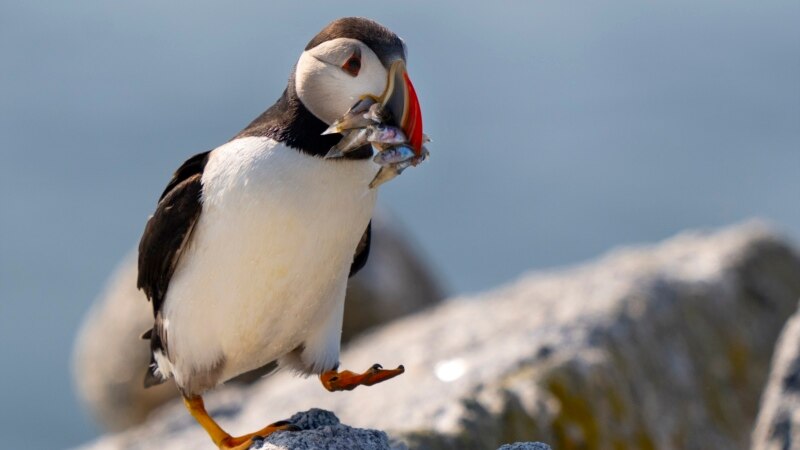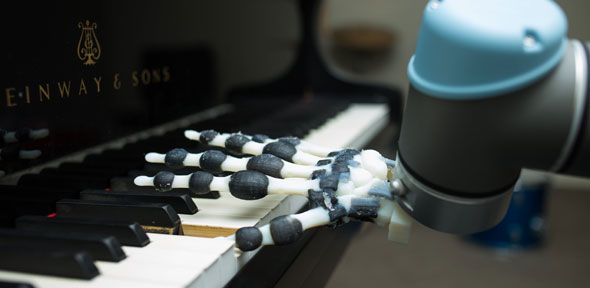
Scientists: Maine’s Puffin Bird Population Is Recovering
Scientists studying the Atlantic puffin population off the coast of Maine say the birds are now recovering after suffering major losses in 2021.
Atlantic puffins look and walk similarly to penguins. Wildlife officials say reproductions for the animals on islands off the coast of Maine fell sharply in 2021. But last year, about two-thirds of puffins in the area produced young. While the numbers did not reach that same level this year, the birds still had a better year than in 2021.
The main reason for the decreasing numbers is a drop in the population of small fish puffins feed on, such as herring. Two years ago, puffin colonies suffered one of the lowest reproduction rates in many years because of a lack of those fish. Only about one-quarter of the birds were able to raise young in 2021.
Environmental groups have linked the lower fish populations in the area to warming ocean temperatures. The Gulf of Maine, which has puffin colonies on its islands, is warming faster than most of the world's oceans. Some recent years have been especially warm and local climate officials have said this summer appears to have been “still unusually warm.”
Bill Sydeman is the president and chief scientist at the Farallon Institute, a conservation organization based in California. He told The Associated Press the reasons for the puffin population drop include deadly heat waves, loss of food, loss of islands to sea level rise and an inability to reproduce, or breed.
“The problem with climate change is these breeding failures and low breeding productivity years are now becoming chronic ,” Sydeman said. “There will be fewer young birds in the population that are able to recruit into the breeding population.”
Maine's puffins are the only breeding Atlantic puffins in the United States. Worldwide, the species lives in the North Atlantic from Maine and Canada to Europe. Other countries with large puffin populations, such as Iceland, have also seen their bird populations drop.
The Maine puffin population once fell to only about 70 pairs in an area known as Matinicus Rock. Hunters who went after the birds for their meat and feathers had nearly destroyed them by the early 1900s. Stephen Kress is a scientist with the Audubon Society who has sought to grow puffin colonies since the 1970s. His attempts included moving young puffins from Canada to Eastern Egg Rock, another small island in the area.
Wildlife officials say adult birds in the colonies appear fairly strong, and it's "likely the population is stable, and it could still be growing,” said Don Lyons. He is the director of conservation science at the National Audubon Society’s Seabird Institute in Bremen, Maine.
The difficulties facing seabirds make successful breeding seasons especially important, said P. Dee Boersma. She is a University of Washington professor of biology and director of the university's Center for Ecosystem Sentinels.
“What that means is we should be more cautious and concerned about reproductive failures and things like that to make sure that in good years everyone that wants to has a chance to breed, and do well,” Boersma said.
I’m Bryan Lynn.
The Associated Press reported this story. Bryan Lynn adapted the report for VOA Learning English.
Words in This Story
conservation – n. an organized effort that aims to protect animals, and natural resources
chronic – adj. something that continues for a long time
recruit – v. to try to persuade someone to work for a company or to join an organization
cautious – adj. taking care to avoid risks or danger
Share this article:
This article uses material from the VOA Learning English article, and is in public domain. Images and videos are available under their respective licenses.

